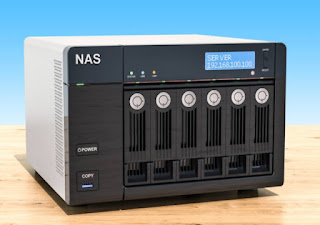Basics of Computer Network Security
Qnap Colombia Computer network security is often pictured as two security guards monitoring your computer. Computer network security is actually the defense against intruders trying to access your computer or network. Detection gives information about who tried to access your system, and whether they succeeded or not. It also helps you understand what they could have done. Your computers store banking information, credit card details and chat logs. It is possible to live with someone listening to your private conversations, but not when they steal your bank and credit card information.
Intruders use other computers to launch attacks or disguise themselves as intruders. Custom Malware is a major problem in network security. Targeted attacks that are targeted against one target can be detected by signature detection. The Malware has not been released to the general public and is therefore unlikely to have a signature. You can disguise malware from signature detection using polymorphic tools. These tools change the code continuously, creating a new version with a unique signature every time a program is created. This functionality is possible with polymorphic toolkits like:ADMutate and PHATBOT as well as Jujuskins and TAPioN. Another example of stealthy malware was the Gozi trojan. It existed in the wild for more than fifty days at the beginning of 2007. It stole the account information of over 10,000 people and infected over 5,000 hosts. Gozi's primary purpose was to steal credentials sent over SSL connections, before they were encrypted, and then add them to a server that would give them out on demand for payment. The trojan could have been detected much sooner if the malware author had chosen a better packing utility.
Every day, hackers discover new loopholes and vulnerabilities. Many patches are provided by computer vendors or developers to fix loopholes that have been discovered. An attack known as a "zero-day" is one that targets a vulnerability and for which no solution is available. The zero-day exposure ends when the vendor releases a patch. The Windows Animated Cursor Remote Execution Vulnerability was a recent example of a zero-day critical vulnerability. This was fixed by MS07-01719 (Microsoft Security Bulletin 925902). This hole was considered critical because remote code could be executed by attackers. Microsoft was notified by Determina, a security company. The vulnerability was made public on March 28, 2007. Determina published a video showing Metasploit exploiting Vista on April 2nd 2007. Microsoft released the patch on April 3rd 2007 to end at least six days' zero-day exposure. The exploit code that was used to exploit this vulnerability was in use for several days, if it wasn't several weeks, before the patch was issued. Many organizations take many days to update their systems with the patch after it is released. It is usually your responsibility to download and install the patches. You should check your network for updates at least once per day. Enterprise tools can also be used to manage them.
How can an intruder get into my system? Intruders have many tools that can be used to gain access to your system. These tools include:
Paros Proxy
Metasploit Framework
Aircrack
Sysinternals
Scapy
BackTrack
P0f
WebScarab
WebInspect
The Core Impact
IDA Pro
Rainbow Crack
Your organization may have an Internet connection, or disgruntled workers (who doesn't?). Your computer systems are vulnerable to attack. Attackers are targeting your computer systems with increasing maliciousness and stealth, whether it's the five, ten or 100 daily probes that your Internet infrastructure receives, or the malicious insider slowly gaining access to your most important information assets. To protect your organization from attackers, you need to be able to identify vulnerabilities and discover intrusions.




Comments
Post a Comment